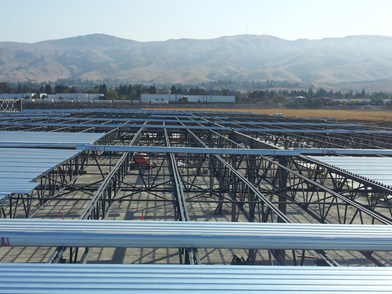There are many qualified structural engineers in the Bay Area, but how do you determine which engineer or engineering firm is well suited for your large-scale project?
You should begin by clearly defining your project goals and scope of work, and then find an engineer who can help you achieve your vision. Here are some recommendations about what kind of service you should look for from a Bay Area structural engineer.
1. Someone Who Shares Your Values for Your Project
A structural engineer well suited for your project is someone who shares your vision of what a great project should be. Most likely, a great project is one that is approached efficiently and economically, meets the highest design standards, and meaningfully serves its functional purposes.
During the design process, structural engineers should at minimum have the following goals:
- Buildings conform to the desired performance standards and functional requirements.
If code minimums are the goal, higher standards should be considered when feasible. - Structure is low-maintenance, long-lasting, constructible, and feasible to build.
- Construction materials and techniques are as sustainable as possible.
- Architectural design goals are met.
Often when an engineering professional shares your values, she or he is concerned not only with finishing the initial construction of the project, but making sure the project is constructed so that it fulfills its long-term purpose.
2. Someone Who is Creative About Finding Project Solutions
The engineer needs to spend time to properly plan for the project and find solutions that are rooted in the client’s goals.
A large-scale project will have many moving parts, but the professional engineer needs to take a holistic approach and see the project as a whole rather than just the sum of its parts. This holistic approach gives way to creativity and developing simple solutions to complex problems.
3. Someone Who Has a Broad Understanding of Construction
Construction nowadays has become a very complex business.
If not well planned at the design stage of any given project, there could be disastrous implications for the project principals. A good engineer must be able to anticipate problems and advise her or his client of them early to avoid unnecessary headaches.
From the design professional standpoint, engineering solutions must be translated and properly reflected in the project construction documents.
Proper communication of the design to the construction professional is key to a successful project.
Ultimately, the project documents must be clear, with practical constructible details that include the various other disciplines’ components of the project.
Over the last few years, with the advancement of project design technology, computer-generated simulations of buildings have encouraged new ways of collaboration between design and construction professionals.
The recent trend of building information modeling, or BIM in the construction industry, provides a virtual way for architects, engineers, and contractors to create an accurate digital model of a building or facility. The benefits of BIM include a greater degree of project streamlining and coordination to improve efficiency. However, there are potential legal pitfalls also associated with BIM, such as data ownership and risk sharing. Another risk is that BIM may lead a somewhat false feeling of security and less rigorous checking of conflicts between disciplines.
The ideal working relationship boils down to compatibility between people, sensitivity to the client’s needs, and a deep understanding of the business of design/construction.
The engineer must be proactive with the project team in guiding your project in a way that accomplishes your overall vision.
Source:
Azhar, S. (2011).
”Building Information Modeling (BIM): Trends, Benefits, Risks, and Challenges for the AEC Industry.”
Leadership Manage. Eng., 11(3), 241–252.

